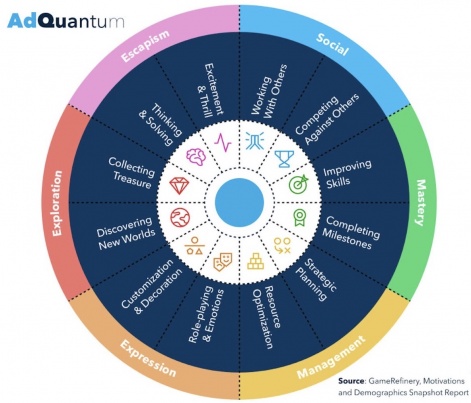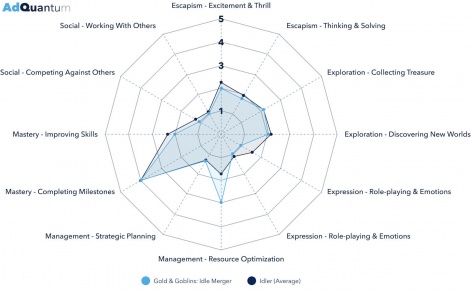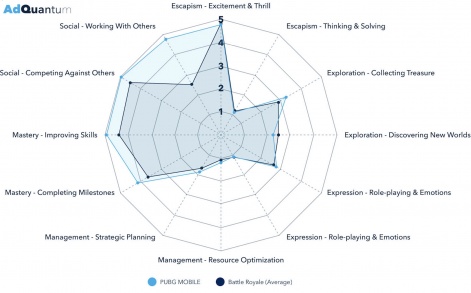A successful ad campaign is important for spreading the word about your new game and enticing users to play. However, advertising is becoming ever trickier space to navigate as standing out in the crowd becomes increasingly difficult. In addition, the associated costs mean that ads need to serve their purpose or result in a poor investment and a flop game.
In this guest post, AdQuantum Design’s creative production director, Ivan Razmakhov, shares details on creative ad strategies, explaining how to tailor ad formats to suit different game genres, how to appeal to specific player motivations and the influence that different monetisation models can deliver.
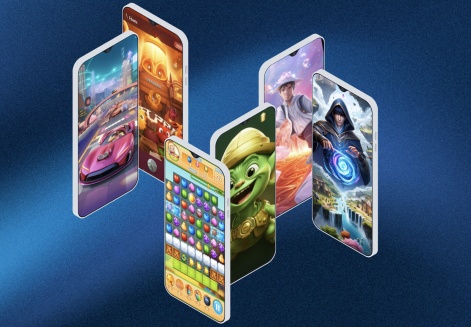
The mobile game ad space is overflowing with ads of all formats and variations. For example, there were more than 12 million quarterly mobile game ad creatives in 2022, according to a report by SocialPeta. Thus, it's extremely challenging for advertisers to even show an ad to potential users, not to mention the possibility of conversion, as the ad waterfall is heavily saturated with other advertisers competing for users’ attention.
However, the bigger issue lies in ad performance. While there are numerous advertisements, approximately 5 out of 100 prove to be successful, based on my experience. Companies invest significant time and money in producing costly ad videos, yet these often result in only a 3-5% conversion rate.
In this article, I’ll delve deeper into selecting the right ad format for various mobile games and producing catchy, engaging, and effective ad content.
One of the most important factors for choosing the right ad format for a game is interest or motivation.Ivan Razmakhov
Game-specific ad creative strategies
For each game, a variety of options can be generally created. You can even mix different formats and, for example, start with a UGC introduction, followed by gameplay-focused creatives, which is a very common option. It all depends on the game developer's requests and objectives.
1. Interests and motivations
When producing ads, it’s advisable to base creative concepts on the game’s audience rather than anything else. One of the most important factors for choosing the right ad format for a game is interest or motivation. GameRefinery’s Motivations and Demographics Snapshot Report details the division of players by motivations in games. This scheme may be exploited when producing ads for mobile games.
- Escapism
Thrill-seeking - casinos, action games.
Problem-solving - puzzles, engineering games.
- Social
Competition - games with PvP tournaments.
Collaboration - games with GvG tournaments.
- Mastery
Completing checkpoints - level-based games.
Skill improvement games - games with character and skill levelling up.
- Management
Resource optimisation - for example, survival games.
Strategic planning - games where you need to set up production such as farms.
- Expression
Customisation and decor - games with new skins, character decoration, interior design.
Role-playing and emotions - interactive stories, role-playing games.
- Exploration
Discovering new worlds - games with opening new territories.
Collecting treasures - games with collecting any items or characters.
So, after you’ve deconstructed your game by elements, you move on to composing an individual chart for the project. The more you see the frequency and importance of this motive in the project, the more points it gets on the chart, thus the more you use this motivation for the ad concept.
For example, this is what the chart for Gold and Goblins: Idle Merger looks like:
And this is the chart for PUBG Mobile:
A lot of these motivations may come together within one game. This system is useful as it helps to choose the right triggers in ads for one or another game. Therefore, you first need to break the game down into its components and then, based on this, look for the ad concept.
A supplementary tool that acts not as your main weapon but rather as a guide to help you stay on course when formulating hypotheses or to help you break out of a deadlock if you're stuck.
Each game has its own chart. You immerse yourself in the game, note its elements and mechanics, and then construct a project-specific diagram.
This targeted approach not only improves the chances of ad success but also enhances the overall user experience by delivering content that resonates with the audience's preferences and expectations.
2. Type of monetisation
The choice of ad creative format can also significantly depend on the game's monetisation type, as different monetisation models cater to different player behaviours and preferences. Here's an overview of how ad creative format choices might vary based on the most common game monetisation types:
- Games with in-app purchases
Games that mainly use in-app purchases for monetisation are often team-based shooters, MMORPGs, battle royales, gambling games, and some mid-core games.
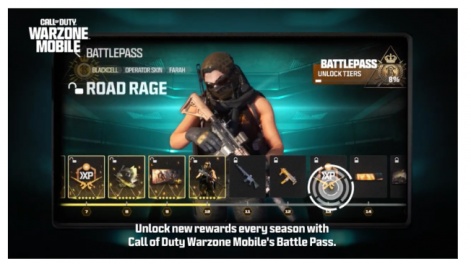
In team shooters, for example, it's key to show players how in-app purchases, such as exclusive weapons, experience boosters, or battle passes, can improve their chances of winning and the overall gaming experience or give additional gaming content. These games typically employ ad creatives with vivid and lively gameplay resembling AAA games.
- Games with in-app ads
Games that rely on an in-app ad monetisation model are usually hyper-casual and earn revenue by showing ads. These ads might pop up periodically, after completing a set number of moves, or in exchange for in-game boosters.
The emphasis in these games is often on displaying gameplay creatives or interactive ads, underscoring the enjoyment and straightforwardness of the game. This simplicity and the quick, satisfying play sessions make them perfect for brief entertainment, like during a subway commute or a short break.
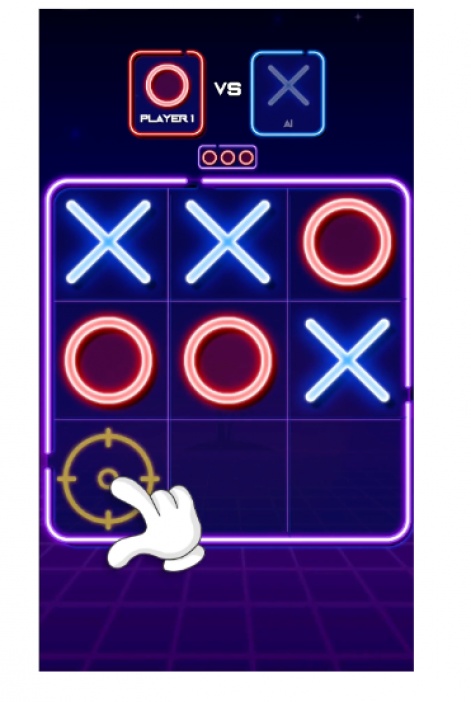
- Hybrid model (IAP + IAA)
The hybrid monetisation model is mostly used by casual mobile games aimed to distract players from everyday worries. These games open up a broad spectrum of creative possibilities, ranging from straightforward gameplay to tactics like misleading, playable, and UGC ads. The aim is to highlight the simplicity of the gameplay and captivate players with an engaging storyline that teases what's to come. This approach motivates players to either discover the story's continuation or experience it firsthand.
Thus, one of the successful ad concepts – especially if it’s an interactive story game – could involve a hint of erotic texting, enticing users to play to see what happens next.

Traffic source
The ad platform that you’re going to use to run your ad creatives is another crucial factor to consider when choosing a creative format. Here are some points to keep in mind:
- Playable ads on Paid social sources typically have low performance. Therefore, it's not recommended to launch playables directly on Paid social; it's better to first try them out on ad networks.
- On ad networks, gameplay or meta-misleading 2D and 3D creatives with playable end cards tend to perform best. Network algorithms don't allow for reducing CPI on highly misleading creatives, unlike on paid social sources.
- Static ads can't be launched on some networks – simply due to the lack of technical capability.
- UGC ads usually perform best on TikTok, as they blend naturally into the feed and don’t alienate potential users. However, for games, creating UGC format ads should not be the first creative iteration. It's more effective to take an already successful 2D or 3D creative and add UGC elements to it.
We need to highlight the coolest parts of a game super quickly. Sometimes, that involves a bit of exaggeration to really draw in potential players and get them hooked.Ivan Razmakhov
What about using misleading ads?
Misleading approaches may be applied to any game category and genre except for hyper-casual games. They tend to perform best with games that have more complex gameplay.
Generally, misleading creatives are viewed negatively because they set false expectations for users and are highly discouraged in app stores. We categorise misleading ads into two types: misleading and meta-misleading. Misleading ads are those that depict a non-existent game mechanic – for instance, presenting an interactive story narrative for a Match-3 game. Meta-misleading creatives, on the other hand, feature slightly improved or exaggerated elements to make them more vibrant and representative.
These ads can be an excellent tool. They're great for catching a user's eye in a flash - after all, we've got just three seconds to make an impression on a potential user. That means we need to highlight the coolest parts of a game super quickly. Sometimes, that involves a bit of exaggeration to really draw in potential players and get them hooked. So, meta-misleads help us show a user simple and understandable rules, engage him in a game, grab their interest and show progress/development in an understandable and quick form.
For instance, let's consider the meta-misleading ad for the Idle Lumber Empire mobile game.
Essentially, the gameplay presented in the ad is the same as in the actual game, but it's wrapped in a more appealing package. The core concept - harvesting and selling wood - remains unchanged, which is what makes this misleading ad 'meta'.
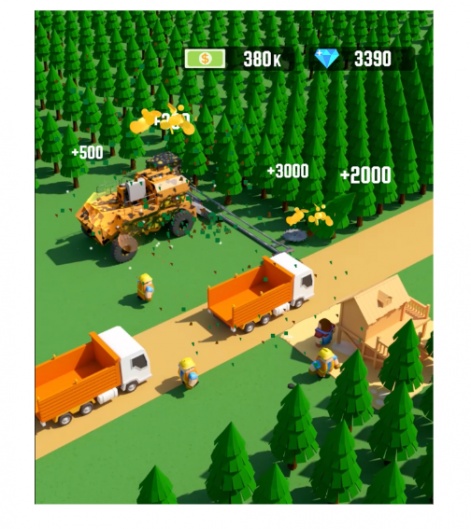
Key takeaways
Think of producing ads for mobile games as a mash-up of knowing what makes your game tick, who's playing, and the kind of ad stuff that actually works. We're not just throwing ads out there, we're crafting experiences that extend the game's vibe right into its marketing. It's all about connecting the dots between making someone curious and turning them into a fan.
1. First and foremost, define what the game monetisation is, and if it’s a mixed model, try to also define the ratio of in-app ads and purchases. It’s important as the ads greatly depend on this aspect.
2. Play and thoroughly analyse your game before producing creatives. Deconstruct it for core and non-core mechanics and define their frequency and importance within the game.
3. Research the game’s audience and the motivations that drive them when playing the game.
4. Extensively study your competitors (here’s the list of the main free and paid ad intelligence platforms you can use for this purpose). Try to define their top-performing mechanics and tactics used in ads and think about the ways to combine them within one creative.
5. Understand where you’re going to run your ads, as it plays a crucial role in the creative format, too.
Edited by Paige Cook


